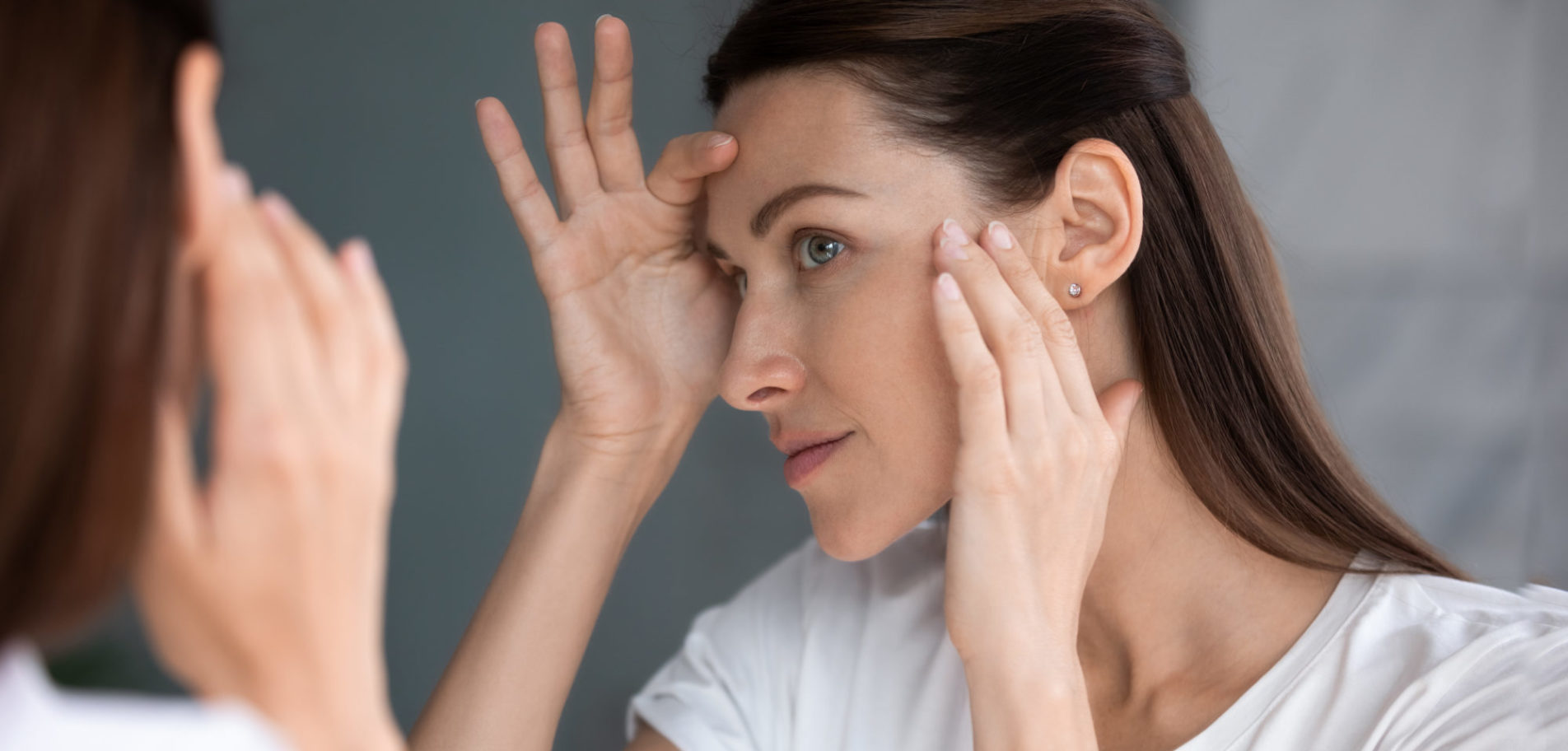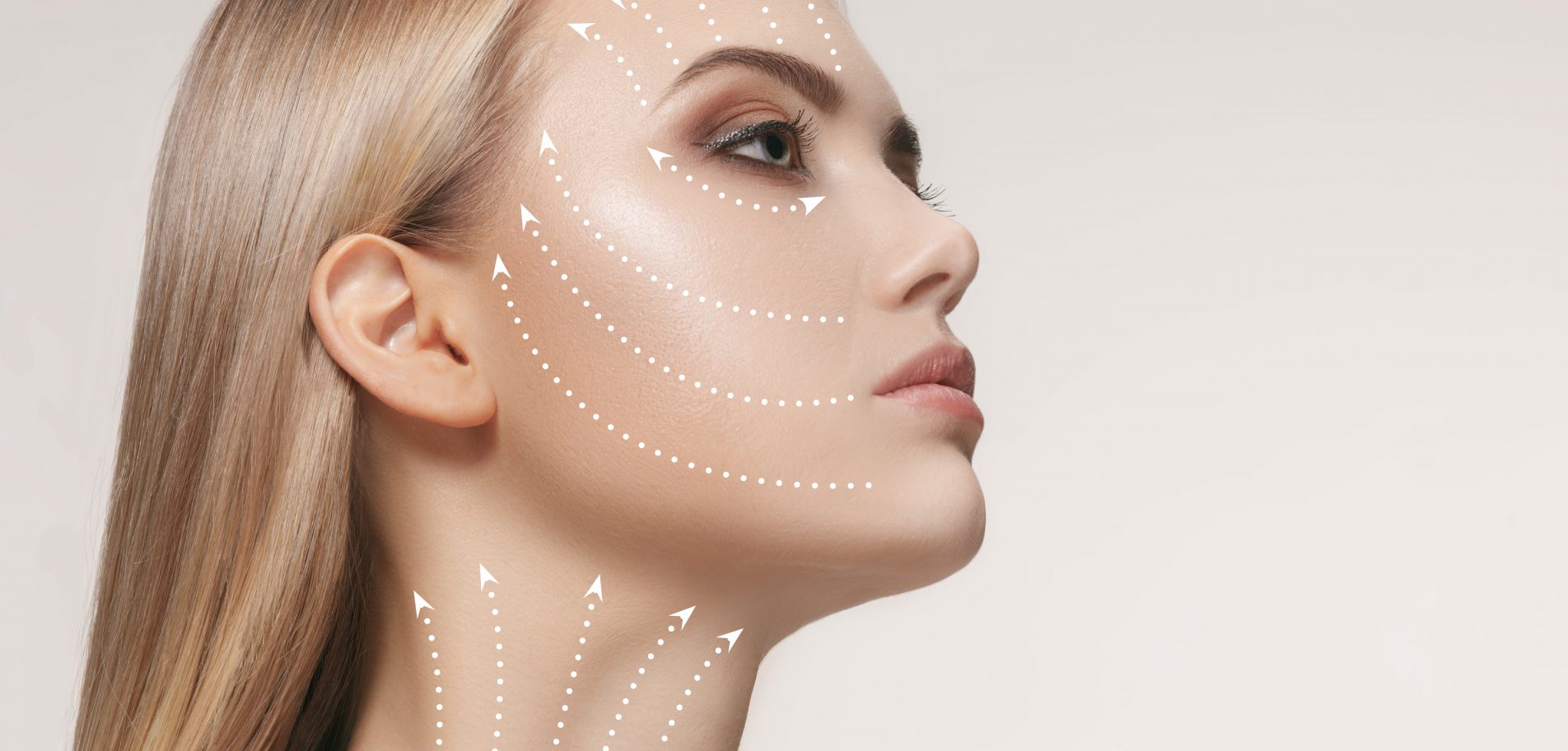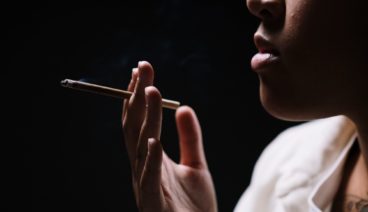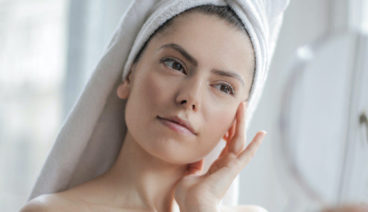We are all aware that visible facial pores should be a concern for many reasons and for all genders. Indeed, from teenage years to old-age, facial pores mean aesthetic issues… Teenagers fight against clogged pores that lead to blackheads or whiteheads while middle-aged people start to complain about oily or dull skin due to enlarged pores.
Skin pores’ purpose
Skin contains millions of opened pores that allows the skin to “breathe”! Indeed, the definition of a pore is a very small hole in the skin of people or other animals, or a similar hole on the surface of plants or rocks through which gases, liquids, or microscopic particles may pass.
Then, pores not only allow skin to breathe but also to let the sweat and sebum pass through, to keep it moisturized and protected by the hydrolipidic protective barrier.
Then, what is wrong with facial pores?
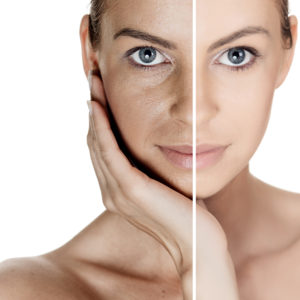
Are facial pores a cosmetic issue?
There’s a lot of studies about mechanisms of pores during lifetime but no real consensus about their enlargement. We know that numerous factors play a role such as genetic predisposition, ethnicity, gender, age, seborrhea, acne, comedogenic xenobiotics, and sun exposure. Thus, we can summarize here the main causes of enlarged pores:
- Excess of sebum (due to seborrhea or acne)
- aging (including photoaging)
- thick hair follicle (may be related to ethnicity or gender)
And yes, nobody is spared… As if wrinkles are not enough to mark our age, we must look after our pores!
So, let’s go deeper into the pore 😉 and let’s concentrate into the structures surrounding the pore.
Definition of pore
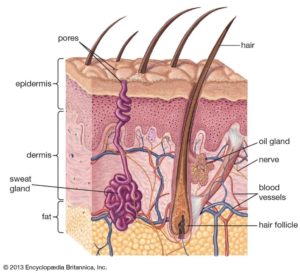
Skin pores cannot be seen as true “pores” but are instead slight depressions of the stratum corneum and are not physiological cutaneous apertures. Causes of pore formation can be related to the process of hyperkeratinization of the hollow caused by pilosebaceous follicles, loss of dermis structural components or even alterations in the epidermis architecture.
Then, it’s easy to understand now that pores cannot be opened or closed. They also cannot be made smaller. To reduce their size, we must better understand how acting deeper, in epidermis or dermis.
They are two types of pores
One contains a hair follicle and a sebaceous gland and the other one is the end of sweat gland. Then, by definition, sweat pores act like a thermoregulator and hair follicle pores support greasing through the excretion of sebum. It is important here to remind that greasing is crucial for the skin barrier function. Sebum helps to create the hydrophilic film on the skin surface which has an antimicrobial effect due to its acidic pH. It acts also as a UV radiation-blocker, keeps the skin moisturized, its smoothness and gives epidermis its suppleness.
Structure of skin pores
An article defined a pore as any circular shape with a size wider than 0.02 mm2. In another study, the morphological subtypes of skin pores were classified into 3 different categories, as follows: “visible skin pores” (0.1–0.6 mm2), “enlarged skin pores” (0.3–0.6mm2), and “blackhead embedded skin pores.” (Kim BY, Choi JW, Park KC, Youn SW. Sebum, acne, skin elasticity, and gender difference – which is the major influencing factor for facial pores? Skin Res Technol 2013 ;19:e45–53).
How dealing with facial pores enlargement?
Strengthening cutaneous compartments
First, we know that aging means loss of skin elasticity due to collagen degradation in dermis. So, again, fighting against skin pores’ enlargement means to use active ingredients that reshape collagen network! It’s good news eventually but it should be interesting to specifically focus on this special area surrounding skin pores.
BioMeca have been performing a study to characterize the effect of an active ingredient aiming at improving mechanical properties in the perifollicular area. The results were great, and we demonstrated that this active improves skin elasticity and firmness around pores. It confirms the scientific consensus saying that increased age and decreased skin elasticity could cause the increase in pore size.
That opens the door to a new way to claim an anti-aging effect impacting not only pore size but also collagen network reshaping around this very specific area.
Should be also a way to investigate hair loss?
Probably. Reshaping collagen network around hair follicle must be a way to prevent hair loss. And it’s important to remind that we need to influence native collagen reorganization or production of hair follicle, not only on applying collagen because we know that too much collagen treatments lead to side effects.
And what about excess of sebum?
Well, here it’s clear that we need to investigate sebum secretion by sebaceous glands. It will be one of our next topics, stay tuned!
So many articles to write and so many studies to perform… skin biology is so rich in topics😊
Finally, friends or enemies? Friends, definetely!
We must take care of our pores. The point is how. As usual, in protecting our skin, using noncomedogenic or oil-free make-up, washing our face with gentle cleanser, being kind with ourselves: pore is part of us. And when it’s too late, may be using active ingredients helping to restore organization of skin’s structure surrounding pores😉
Discover our solutions
Facial pores
Anti-aging and regenerating effect
Smoothing effect
Follow our other news
The relationship between skin elasticity and viscoelasticity
 24 January 2024
24 January 2024Are you a smoker? Here’s how it affects your skin!
 29 November 2022
29 November 2022Why are simplicity and multifunctionality new trends in the beauty market?
 19 October 2022
19 October 2022

